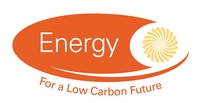Storage Appraisal - Appendix A5.6 - Exemplar Modelling and Dynamic Simulation of Bunter Sandstone Formation Closures in the Southern North Sea
Abstract:
This document is a supporting document to deliverable MS6.1 UK Storage Appraisal Final Report.
The aim of this work was to build a 3D geocellular model of the reservoir and sealing formations for a closure in the Bunter Sandstone Formation which could be used to model CO2 injection. A region in storage unit 139.000 (zone 4 Bunter Sandstone Formation) of 44.0 km by 25.2 km was chosen for detailed modelling. The target daughter storage unit 139.016 (Bunter closure 36) was chosen for modelling as:
- No faulting was visible on the seismic over the closure
- The storage capacity was estimated to be large enough to store a sizable amount of CO2
- The area included three additional closures that could be used to study the impact of CO2 injection on adjacent storage units
- Data coverage was good over the chosen area
Some important findings arose from this study:-
- The storage capacity may be controlled by either the pressure (when the pressure increases above the maximum limit, the rate must be reduced), or the migration rate (if a high injection rate is maintained, CO2 will reach the spill point more rapidly).
- The pore volume utilisation and total capacity are quite sensitive to the assumed value for the fracture pressure gradient. A change in this gradient may switch the storage control from pressure-controlled to rate-controlled.
- The storage capacity for an open model may be less than that for a closed system, if heterogeneity encourages a low pore volume utilisation.
- It is import to monitor the pressure at the crest of a dome. Even when the injection rate is pressure controlled at the depth of the well completions, the pressure may rise above a safe limit in the crest.
- It may be possible to increase storage capacity by controlling the injection rate. A lower rate will allow CO2 more time to rise buoyantly and to dissolve in brine, before reaching the spill point.
Publication Year:
2011
Publisher:
ETI
Author(s):
Bentham, M., Williams, J., Harris, S., Jin, M. and Pickup, G.
Energy Category
Language:
English
File Type:
application/pdf
File Size:
7281632 B
Rights:
Energy Technologies Institute Open Licence for Materials
Rights Overview:
The Energy Technologies Institute is making this document available to use under the Energy Technologies Institute Open Licence for Materials. Please refer to the Energy Technologies Institute website for the terms and conditions of this licence. The Information is licensed "as is" and the Energy Technologies Institute excludes all representations, warranties, obligations and liabilities in relation to the Information to the maximum extent permitted by law. The Energy Technologies Institute is not liable for any errors or omissions in the Information and shall not be liable for any loss, injury or damage of any kind caused by its use. This exclusion of liability includes, but is not limited to, any direct, indirect, special, incidental, consequential, punitive, or exemplary damages in each case such as loss of revenue, data, anticipated profits, and lost business. The Energy Technologies Institute does not guarantee the continued supply of the Information. Notwithstanding any statement to the contrary contained on the face of this document, the Energy Technologies Institute confirms that it has the right to publish this document.
Further information:
N/A
Region:
United Kingdom
Related Project(s):
Related Publications(s):
2007 - 2017 - 10 years of innovation - Carbon Capture and Storage
ETI: Innovation Learnings - Carbon Capture and Storage
Infographic - Reducing the cost of CCS
Infographic - Taking Stock of UK CO2 Storage
Storage Appraisal – Project Insights
Storage Appraisal - Appendix A3.1 - Storage Unit Characterisation
Storage Appraisal - Appendix A4.2 - Well Penetrations and Production in Oil and Gas Fields
Storage Appraisal - Appendix A5.1 - Summary of Dynamic Modelling Scoping Studies
Storage Appraisal - Appendix A6.1 - Security of Storage
Storage Appraisal - Appendix A6.2 - Security of Storage (Appendices)
Storage Appraisal - Appendix A8.1 - Technical Specification for the UKSAP WDG Application
Storage Appraisal - Executive Summary
Storage Appraisal - One Page Summary
Storage Appraisal - UK Storage Appraisal Project - Final Report
Storage Appraisal - United Kingdom CO2 Storage Capacity Appraisal - Request for Proposal
Storage Appraisal - User Guide for the Web-enabled Database and Geographical Information System
Storage Appraisal - WP5 - Web-enabled Database and GIS Specification
Taking Stock of UK CO2 Storage
UK Storage Appraisal Project (UKSAP) Database Analysis Project - Request for Proposal



